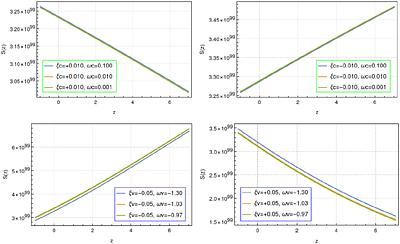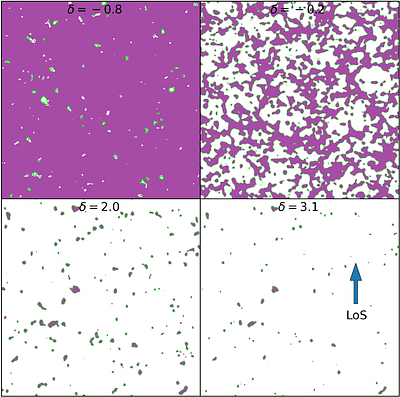By: Abbé M. Whitford, Hugo Rivera-Morales, Cullan Howlett, Mariana Vargas-Magaña, Sébastien Fromenteau, Tamara M. Davis, Alejandro Pérez-Fernández, Arnaud de Mattia, Steven Ahlen, Davide Bianchi, David Brooks, Etienne Burtin, Todd Claybaugh, Axel de la Macorra, Peter Doel, Simone Ferraro, Jaime E. Forero-Romero, Enrique Gaztañaga, Satya Gontcho A Gontcho, Gaston Gutierrez, Stephanie Juneau, Robert Kehoe, David Kirkby, Theodore Kisner, Sergey Koposov, Martin Landriau, Laurent Le Guillou, Aaron Meisner, Ramon Miquel, Francisco Prada, Ignasi Pérez-Ràfols, Graziano Rossi, Eusebio Sanchez, Michael Schubnell, David Sprayberry, Gregory Tarlé, Benjamin Alan Weaver, Pauline Zarrouk, Hu Zou
In the early Universe, neutrinos decouple quickly from the primordial plasma and propagate without further interactions. The impact of free-streaming neutrinos is to create a temporal shift in the gravitational potential that impacts the acoustic waves known as baryon acoustic oscillations (BAOs), resulting in a non-linear spatial shift in the Fourier-space BAO signal. In this work, we make use of and extend upon an existing methodology to ...
more In the early Universe, neutrinos decouple quickly from the primordial plasma and propagate without further interactions. The impact of free-streaming neutrinos is to create a temporal shift in the gravitational potential that impacts the acoustic waves known as baryon acoustic oscillations (BAOs), resulting in a non-linear spatial shift in the Fourier-space BAO signal. In this work, we make use of and extend upon an existing methodology to measure the phase shift amplitude $\beta_{\phi}$ and apply it to the DESI Data Release 1 (DR1) BAOs with an anisotropic BAO fitting pipeline. We validate the fitting methodology by testing the pipeline with two publicly available fitting codes applied to highly precise cubic box simulations and realistic simulations representative of the DESI DR1 data. We find further study towards the methods used in fitting the BAO signal will be necessary to ensure accurate constraints on $\beta_{\phi}$ in future DESI data releases. Using DESI DR1, we present individual measurements of the anisotropic BAO distortion parameters and the $\beta_{\phi}$ for the different tracers, and additionally a combined fit to $\beta_{\phi}$ resulting in $\beta_{\phi} = 2.7 \pm 1.7$. After including a prior on the distortion parameters from constraints using \textit{Planck} we find $\beta_{\phi} = 2.7^{+0.60}_{-0.67} $ suggesting $\beta_{\phi} > 0$ at 4.3$\sigma$ significance. This result may hint at a phase shift that is not purely sourced from the standard model expectation for $N_{\rm{eff}}$ or could be a upwards statistical fluctuation in the measured $\beta_{\phi}$; this result relaxes in models with additional freedom beyond $\Lambda$CDM.
less




